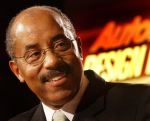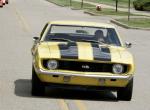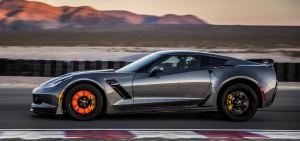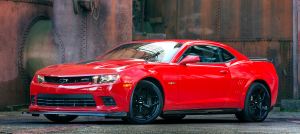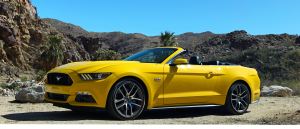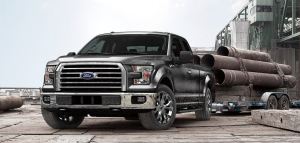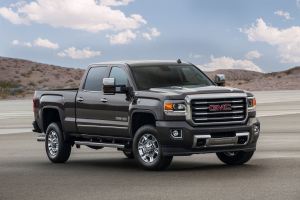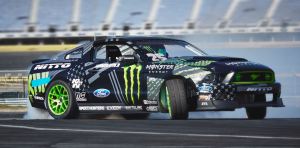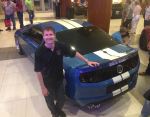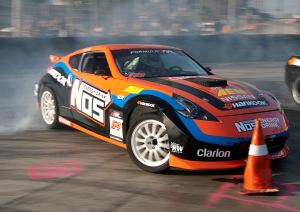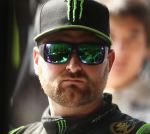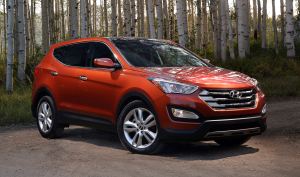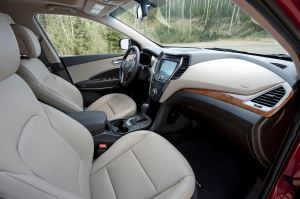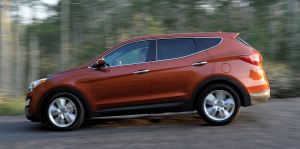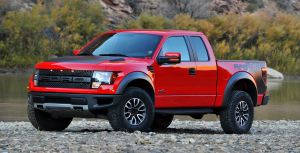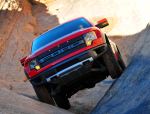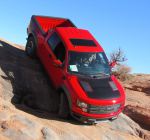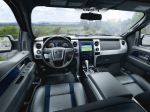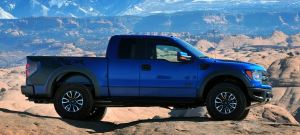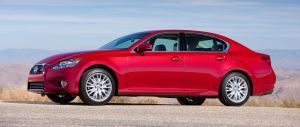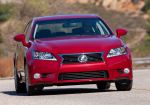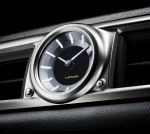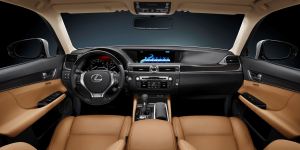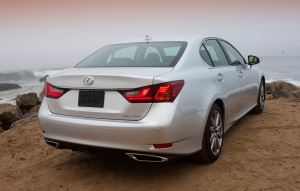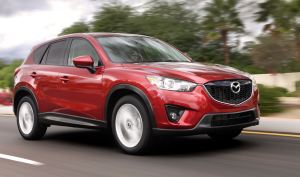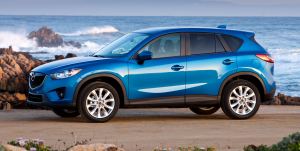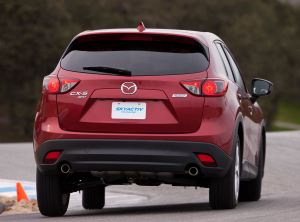By Roger Witherspoon
Ed Welburn was as cool as ever.
A soft-spoken man with a quiet air, he moved through the centerpiece GM exhibit at the New York International Auto Show, barely glancing at the two showcase Cadillacs under wraps, which would be unveiled at a press preview in another hour. He would pause every now and then, look at the lighting, the angle of the cars and comment quietly to one of the many GM employees bustling around the exhibition hall.
Sometimes, Welburn would suggest a slight adjustment in the scene, the type of subtle shift one might expect from a trained artist. Other times, he’d drop a word of encouragement or appreciation to anxious staff. He walked alone, observant and confident, without the trailing entourage that usually accompanies top-level auto industry executives—particularly one who is playing such a key role in the resurrection of General Motors.
These have been trying times for GM, which last year had to recall nearly 27 million domestic cars and trucks and another 3 million overseas because of a host of dangerous engineering defects. This is an important show for GM, which is showcasing some 80 cars and trucks in an effort to overcome the seemingly unending flow of bad news with a cavalcade of eye-catching, flashy vehicles capable of luring motorists and their checkbooks into showrooms. On the main floor of the Auto Show, which closes Sunday at the cavernous Jacob Javits Center, are world debuts of the Cadillac CT6, the Chevrolet Malibu, the urban-oriented Chevy Spark, and the heavy duty GMC Terrain. Then there are minor amendments to some of GM’s signature sports cars, notably the Camaro and Corvette, which are sleeker and faster than ever.
It’s also been a trying few years for Welburn, a trained sculptor, GM’s vice president of global design, and one of the highest ranking blacks in the auto industry. Welburn, whose father owned an auto repair shop in Berwyn, Pa., literally grew up with the car industry and was mesmerized by the sweeping designs of the big-finned vehicles that hogged the roads in the ‘50s.
“Those cars took their design cues from the aircraft of that era,” he said, “which represented the top technology of the time. We still take design cues from aircraft.”
The current edition of Cadillac CT6, for example, with its svelte shape and small, sharp angles, is reminiscent of the silhouette of the nation’s stealth fighters. So are the lines on the current generation of Camaro, which is on schedule to deliver its 500,000th model this month.
These mobile artworks are the products of Welburn’s design teams who collaborate via floor-to-ceiling virtual meeting rooms. His job has been to keep them stimulated and churning out new and bold ideas during a period of financial collapse and bankruptcy, followed by massive recalls due to safety issues. The difficulty is keeping the creative juices flowing with a disparate group of temperamental artists after the public acceptance of their art pieces have been compromised by the poor work of others.
“It wasn’t easy,” said Welburn with a sigh, walking slowly past the newest edition of the Malibu. “The key was to stay focused.
“When we went into bankruptcy there were people saying the company was doomed and all was lost. I called the team together and said stay focused. This will pass. We will get through this and when we do, people will go to showrooms and ask what kind of car have you designed?
“And when they come, we have to be ready. We have to have the designs they want. And my teams focused on that.”
It wasn’t easy for Welburn to “stay focused” during the bankruptcy. He had taken a lot of pride in personally redesigning the Saturn line, from the extremely competitive SUV down to the Saturn Sky, a Barbie-doll of a roadster that was incredibly fine to look at but was short on interior technology. How well the line would have moved will never be known – GM killed the Saturn, Pontiac and Hummer lines as part of its restructuring.
Without a pause, Welburn poured energy into fine tuning GM’s complete line, with emphasis on two of his personal favorites, the Camaro and Corvette. Welburn still drives a vintage Camaro.
Over the last two years, problems that surfaced with GM engineering – particularly the cover-up of faulty ignition switches – could have sent GM sales into a tailspin. But the designs kept the cars afloat.
As the ignition crisis and the recalls accelerated, Welburn had another virtual group conference. “We had the same talk,” he said. “I told them to just stay focused on what we do best, and make sure we aren’t contributing to the difficulties the engineers have.
“We had to make our designs attractive to the public, and something the engineers could readily relate to because they, too, would be getting past these troubles.”
The designs kept coming and so did GM’s customers.
“GM took a marginal hit on sales in the short term,” said Jeremy Acevedo, analyst with Edmunds.com, the car shopping website. “But by and large GM weathered that blow really, really well. The truth is that they were unaffected in the long term. GM does a lot of things right, which is why they are the best-selling auto maker in the nation.
“Even amid all their recall woes they still sold 2.94 million units in 2014. That’s up from 2.79 million in 2013. Their design is the critical part of selling cars. Then there is performance and reliability. Their design could have been compromised by faulty engineering. But when you have a manufacturer firing on all cylinders, as they are now, that is when they do shine.”
The importance of design in the reception of a car can’t be overstated.
“When you think about it,” said David Smedley, associate professor of art and coordinator of Howard University’s sculpture program, “the car is the largest form of sculpture that most Americans own. We don’t buy cars exclusively for their utilitarian value either: our self-esteem and identity is invested in them.”
And cars, if they are to sell and attract hundreds of thousands of buyers, have to be more than just well-engineered. They are conceived as aesthetic aids to the home, Smedley explained, with the engineering coming second to make the product work.
“In the process of designing cars, they are actually clay first,” Smedley said. “They make a full-sized version in clay before they finalize any design. There is nothing like the physical form in front of you, and being in the same space as the vehicle, to get the feel of what these cars are going to be like. It is an emotional attachment, and it therefore makes sense for GM and the other car companies to recruit from fine arts, especially the sculpture programs.”
Welburn and his teams don’t just sit down and draw a car; they also have to predict the future. Automobiles begin as concepts, evolving into a drawing and then a full size clay model. But the process begins one year, and comes out two to four years later – when tastes, politics, fashion, and the nation’s economy may have changed radically. By the time an eye-catching design moves from the drawing board to the showroom, it may be outdated.
But right now, GM’s designs seem to be catching on.
“The Corvette operates in an interesting landscape all its own,” said Acevedo, the analyst. “It is the American answer to the foreign sports cars, at half the price. And it has a loyal following.”
“The Camaro is another story. It has had competition from the Ford Mustang and the other Pony Cars, and it perennially slugs it out with the Mustang. In 2014 Camaro came out on top, selling 86,297 while Mustang sold 79, 675. The Dodge Challenger was behind with 51,611. But this year is going in the opposite direction. In the first quarter there were 29,695 Mustangs sold while Camaro sold 17, 320. And that’s a design issue.”
The Mustang, in keeping with its 50 year anniversary, came out with a new, powerful, popular edition. Camaro, on the other hand, is in the fifth year of this edition and despite the various minor changes, is looking dated by comparison.
But the 2016 Camaro, to be introduced next month, has been completely redesigned and the market will determine if Welburn and his crew have been using their crayons effectively. Currently, their plant is closed for retooling, Acevedo said, which limits sales until the new edition begins rolling off the factory floor.
Design has also helped GM’s truck division, which has a 35.7% share of the nation’s market – just 1% less than industry-leading Ford. The Ford F-150 is actually the world’s best-selling vehicle.
“But it’s the GMC Sierra and Chevy Silverado that are doing very well against the F-150 and are keeping GM near the top of the truck market,” said Acevedo. “Chevy in particular has taken a bite out of Ford’s market share. With trucks, buyers look first for utility, but after that, it’s the styling that counts. And the Silverado and Sierra have developed a very loyal base of buyers.”




